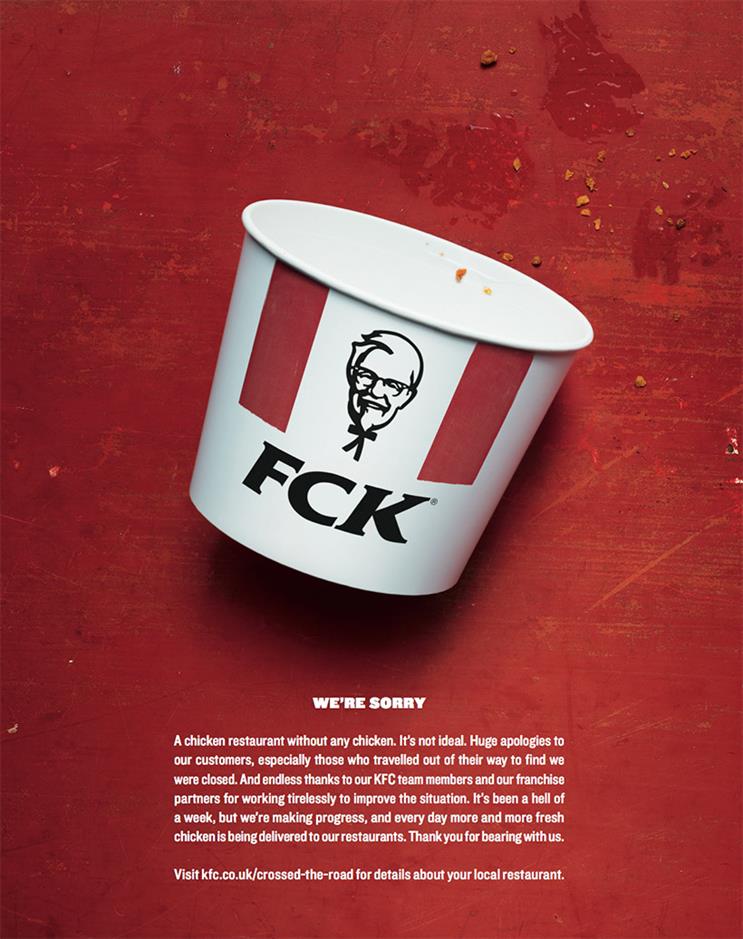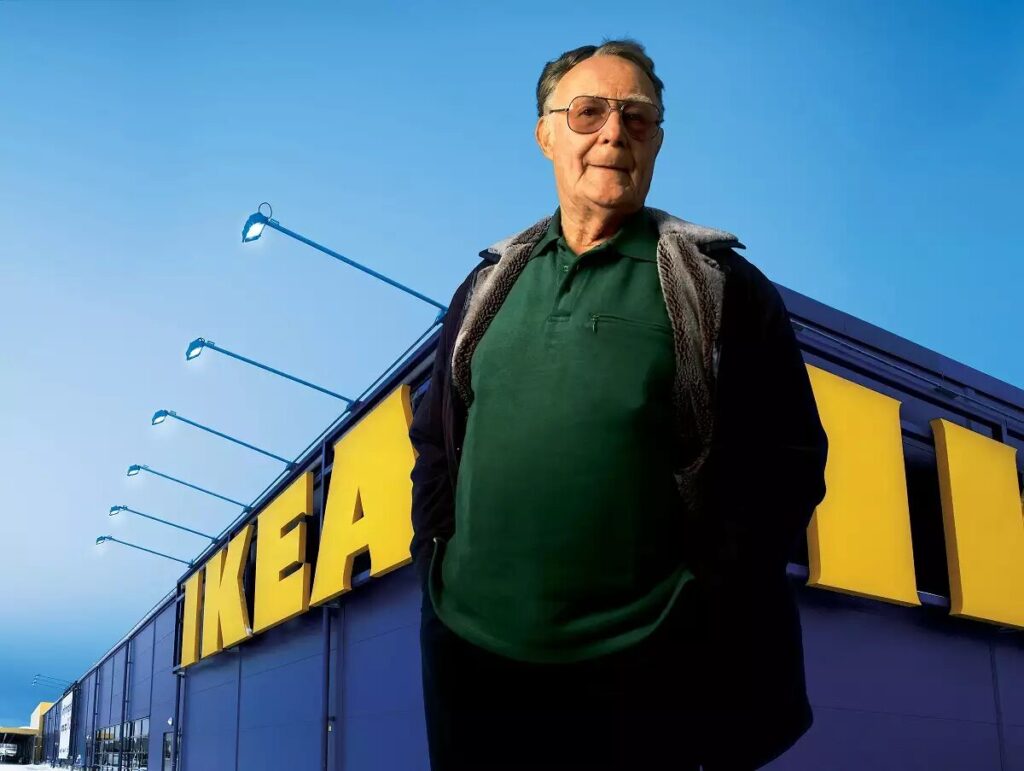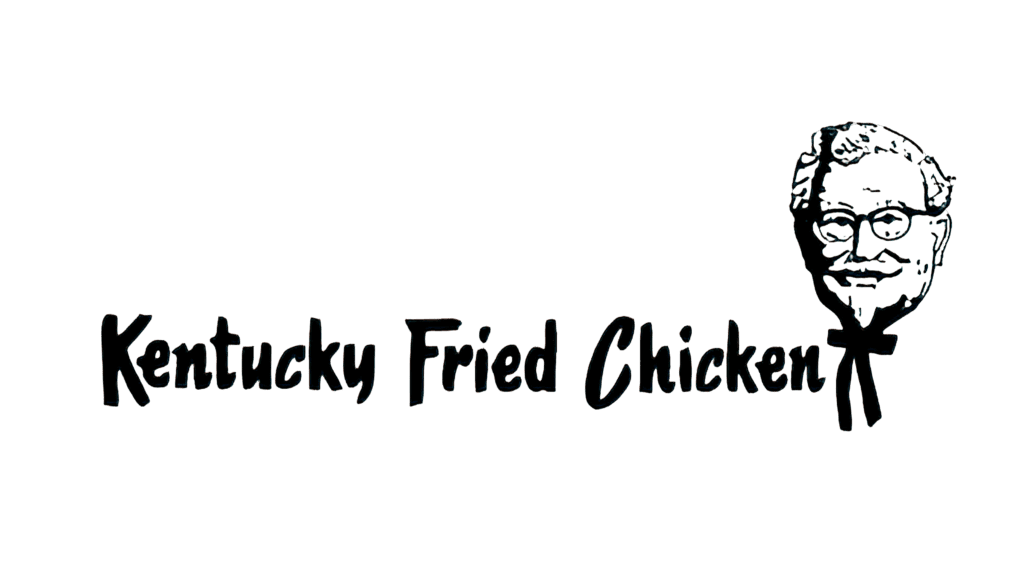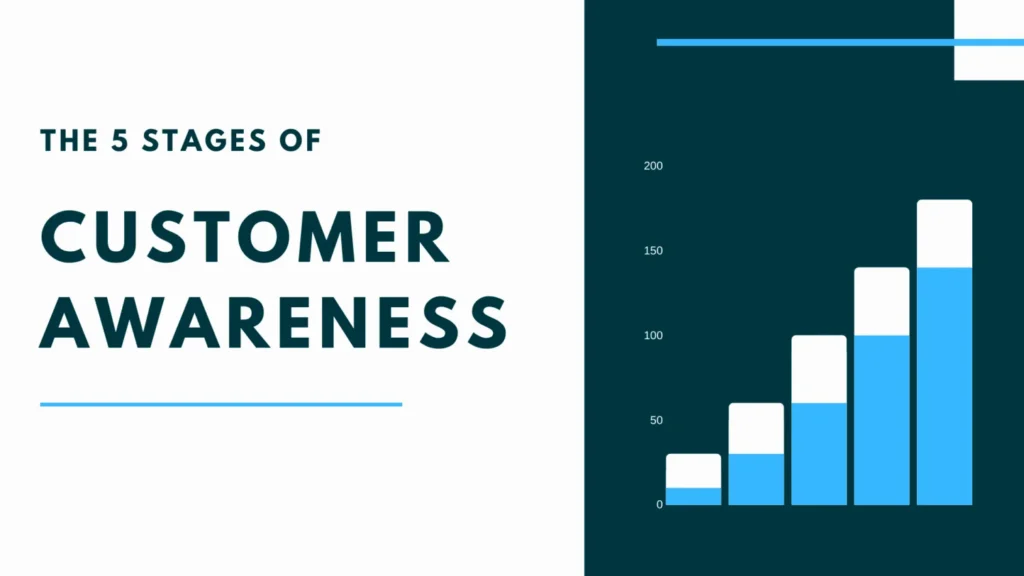Iconic Ads: KFC – FCK

The near-expletive anagram of KFC scrawled on the side of a bucket drew attention before an apology was offered.
KFC discontinued its agreement with food-delivery expert Bidvest Logistics in October 2017 in favour of DHL.
The system was in shambles just weeks after DHL took over delivery management. Franchisees throughout the UK struggled to get supplies.
Some KFC locations were out of crucial ingredients, including chicken, on February 16th. The situation worsened, and hundreds of establishments were forced to close early the following week. By this time, the news had made its way around the world, with footage of enraged consumers complaining that they were being forced to visit Burger King instead. The local police force in Tower Hamlets, London, was even forced to issue a tweet assuring residents that the chicken shortage was “not a police matter.”
According to social media tracking site Brandwatch, there were 53,000 mentions about KFC running out of chicken on February 21 alone, with hashtags like “#ChickenCrisis” and “KFCCrisis.”
In those dreary winter days, it provided a grim picture of the brand’s predicament: The company was in dire straits at the moment. Customers were abusing the team members throughout the UK and Ireland, and many of them were receiving abuse daily. They were being chastised for running out of hot wings, not having salt, and not having ketchup sachets.
The general public did not realise that it was not the fault of the team members. They didn’t realise it wasn’t a case of a team member being lazy; it was a far wider problem.”
With 900 restaurants closed and the brand’s image deteriorating by the hour, KFC turned to its creative agency Mother for help.
KFC set forth two goals: a large-scale public apology to make amends for the inconvenience given to customers and franchisees, and a clear and transparent explanation of what was being done to resolve the problem.
Mother had only been in the business for 11 months, having taken up the creative account from 15-year incumbent Bartle Bogle Hegarty.
However, a deep dive into the company’s operations revealed a key finding: over three-quarters of the UK population (71%) visits KFC at least once a year, and a quarter (24%) eats at its restaurants on a weekly or monthly basis. With such a large audience, an efficient way to reach them all at once was essential.
Given its capacity to reach a “significant minority” of UK customers and its perception that print media benefits from higher trust metrics than social media, KFC decided that print media would best achieve its goals. The Sun and Metro were chosen to deliver a combined readership of approximately six million people.
Even more important was the innovative implementation. The general people in the United Kingdom are no stranger to what they believe to be hollow corporate apologies. KFC would have to flip the standard crisis management script on its head, foregoing the usual corporate apologies on television and resisting the urge to blame its new delivery partner DHL.
The campaign was created by Richard Tahmasebi and Pilar Peace, the creative duo, instead, chose another three-letter word, “FCK,” to tell the “truth” in a strong and down-to-earth manner, guided by the “three Hs” of “humility, humour, and honesty.” The near-expletive anagram of KFC’s brand name scrawled on the side of a chicken bucket drew attention before an apology in ordinary, conversational language was offered.

A chicken restaurant without any chicken. It’s not ideal,” joked the ad. “It’s been a hell of a week, but we’re making progress, and every day more and more fresh chicken is being delivered to our restaurants.”
The ad closed with a link to a dedicated microsite, kfc.co.uk/crossed-the-road, which used humour to disarm customer frustration once more.
The ad, which aired on Friday, February 23, sparked more than 700 press pieces and television debates, reaching a global audience of 797 million people. A total of 219 million social media users were exposed to the branded “FCK” image, giving the campaign a total earned reach of over one billion in just three months. All of this came from a single press ad.
KFC gradually returned to normal operations in the weeks following the campaign’s introduction, allowing restaurants to reopen and provide a complete menu. DHL was relieved of some responsibilities, with Bidvest Logistics resuming delivery to 350 shops across northern England and Scotland.
However, data suggested that KFC’s return to normal was not simply a matter of “back to normal.” It appears that the commercial has aided the chain in surviving its struggle with little long-term brand damage.



